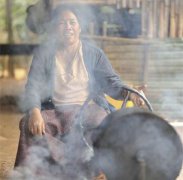Patent technology to increase the content of polyphenols in roasted coffee beans how to process coffee beans correctly

The technology includes two processing steps: the first step is to use water extraction technology to extract polyphenols from raw coffee beans and dissolve them in water, and the second step is to roast raw coffee beans with excessive polyphenols in an almost vacuum condition. spray a high concentration of polyphenol aqueous solution before ending baking, thus greatly increasing the polyphenols in roasted coffee beans.
Polyphenols refer to a group of chemical substances in plants, which are named because of their multiple phenolic groups. Polyphenols, also known as flavonoids, are composed of more than 40 chemical components, which have the functions of anti-oxidation, strengthening the blood vessel wall, promoting gastrointestinal digestion, reducing blood fat, increasing body resistance, and preventing arteriosclerosis and thrombosis; it can also be diuretic, lower blood pressure, inhibit the growth of bacteria and cancer cells, and help digestion. The common characteristic of polyphenols is that they have good antioxidant activity, which can exert antioxidant effect in the body together with other antioxidants such as vitamin C, E and carotene, and scavenge free radicals, which are harmful to human health. There are many kinds of polyphenols with different structures, and their bioavailability, antioxidation and effects on human body are also different. According to the structure, polyphenols can be divided into flavonoids, stilbene, phenolic acids and lignans. At present, more than 8,000 kinds of polyphenols have been isolated and identified in the scientific community. The importance of polyphenols to human health has attracted more and more attention from the scientific community.
Important Notice :
前街咖啡 FrontStreet Coffee has moved to new addredd:
FrontStreet Coffee Address: 315,Donghua East Road,GuangZhou
Tel:020 38364473
- Prev

The difference between American hand brewing and Japanese hand brewing how do you make American hand brewed coffee? How to make Japanese coffee
There is a difference between American style and Japanese style. Although both American and Japanese styles may make the same filter cup, there are some differences in roasting, grinding, filter paper, water temperature and manipulation of coffee beans. The biggest difference is that American hand brewing requires stirring coffee powder with a stirring stick, which is similar to the way we do siphon pots, while Japanese, Korean, Taiwan and domestic hand coffee only draws circles with water and never stirs.
- Next

Why choose wood as fuel to bake coffee? The roasting process of heated coffee beans coffee
All coffee roasting machines work on the same principle: heat raw coffee beans, produce physical and chemical changes and turn them into roasted beans. Physical change means that the color of raw coffee beans changes from green to brown, and the shape changes accordingly. Chemical changes are much more complex, which is the process of production, balance and transformation of substances with fragrance, acidity and other odor components.
Related
- Beginners will see the "Coffee pull flower" guide!
- What is the difference between ice blog purified milk and ordinary milk coffee?
- Why is the Philippines the largest producer of crops in Liberia?
- For coffee extraction, should the fine powder be retained?
- How does extracted espresso fill pressed powder? How much strength does it take to press the powder?
- How to make jasmine cold extract coffee? Is the jasmine + latte good?
- Will this little toy really make the coffee taste better? How does Lily Drip affect coffee extraction?
- Will the action of slapping the filter cup also affect coffee extraction?
- What's the difference between powder-to-water ratio and powder-to-liquid ratio?
- What is the Ethiopian local species? What does it have to do with Heirloom native species?

